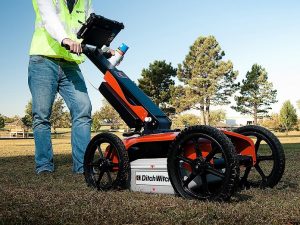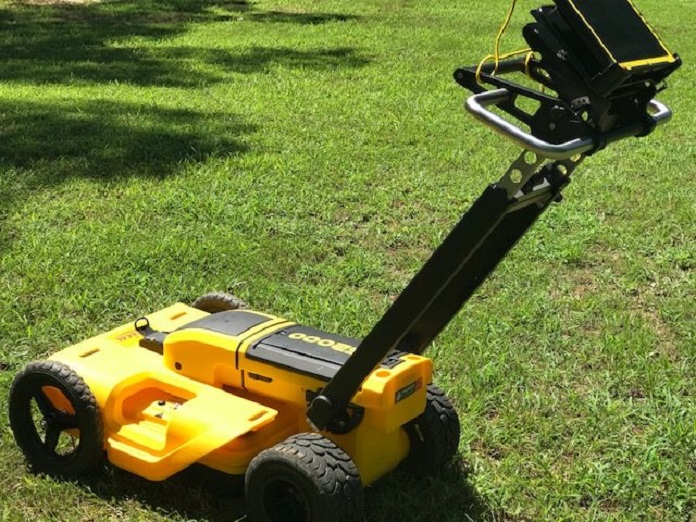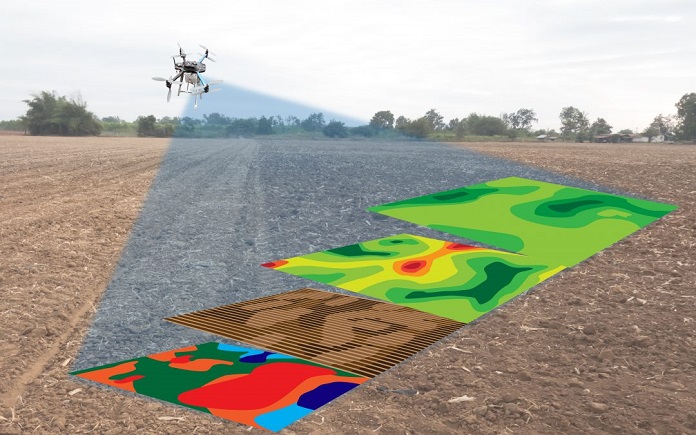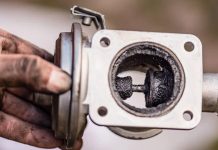
Ground Penetrating Radar (GPR) is a non-destructive technique that scans the underground and provides a render of it in real-time, without the need for digging and disrupting the environment of the scanned site. It is able to locate objects, irregularities, cracks and voids in the ground, determine their depth and size and calculate the exact location and proximity to each other of such objects. It is a tool that has many uses, ranging from scanning for buried pipes, cables and utilities, to forensic and archaeological investigations and even measuring the thickness of ice and predicting avalanches.
How Does GPR Work?
A GPR device contains an antenna and a transmitter that sends out radio signals at a high frequency while moving above the ground that is being scanned, and then receiving the reflected signals which bounce from objects, cracks and discontinuities in the ground. The corresponding time in which the signal arrives back at the GPR device and the amplitude of the returning echo is then calculated together to show the exact location and size of the irregularity in the ground and to form a profile of the scanned area. Operating the GPR device is possible at higher and lower frequencies, both having their own advantages – scanning with a low frequency allows for deeper penetration in the ground, while scanning with a higher frequency improves the resolution of the scan.
The device also contains a radargram that shows the render of the ground in real-time and through which the user can select and command different scanning options, perform calibrations and highlight key areas of interest. If it comes equipped with Wi-Fi and USB capabilities, the radar can be utilized to mail reports and data, take screenshots, transfer files to a cloud and even create .kmz files to be later used with Google Maps.
Where is GPR Used?

Geologists, hydrologists, construction workers, archaeologists, detectives and even regular people, have all found a way to utilize GPR equipment in their work. One of the major applications of a GPR radar is locating and scanning buried utilities. It is quite useful to engineers in their search for underground utilities, because other kinds of tools and techniques for locating such utilities, which operate on a regular electromagnetic induction principle, cannot detect utilities that are nonconductive, registering only conductive utilities. PVC utilities and sanitary sewers are nonconductive by nature, and thus cannot be scanned by these regular tools; GPR equipment solves this.
In archaeological projects, GPR radars are extremely helpful, since they are non-destructive and can provide archaeologists with a detailed overview оf the soil and its contents. This can save a lot of time and potentially prevent some very precious artifacts from being damaged, since archaeologists will get familiar with the underground contents before the actual excavation and will know where exactly to dig and what exactly to look for. GPR technology also finds extensive use in observing and mapping tree root systems. Monitoring the health of trees, whether in an urban or rural environment, is of extreme importance for both the surroundings, such as roads, streets, buildings and power infrastructure, and the trees themselves, in order to protect them from diseases and defects.
GPR scanning allows professionals to accurately and quickly assess the state of tree roots and determine if action is needed in order to save the trees or their surroundings. Military and law enforcement professionals can use Ground Penetrating Radar equipment in order to locate mines, buried explosives, tunnels, underground evidence and graves.
Advantages of GRP Over Other Methods

Like almost every other technology, Ground Penetrating Radar has its limitations, for example not working well where there’s clay soil or saltwater in the ground and needing a skilled technician for operating and interpreting the results, but besides that, it holds many advantages over other imaging methods and is able to get you a more complete scan in much less time.
More Penetrating Power
GPR has been scientifically proven to be more powerful than microwave, ultrasonic or infrared thermography when scanning the ground. It is capable of detecting objects, pipes, cables and deteriorations at a much greater depth and in a much more detailed manner, than all the previously mentioned techniques. Given the right conditions, GPR has a maximum penetrating power of 30-40 meters below the ground, which is an unmatched ability.
Higher Accuracy
Ground Penetrating Radar technology emits a signal in the range of 1 MHz to GHz and this allows the scanner to produce renders that are more accurate and precise than other scanning methods. Researchers and practitioners estimate that the accuracy of GPR is around 90%, a number that heavily surpasses the accuracy of its competitors. GPR is also able to compute the scanned objects in great detail, providing data for thickness, depth and dimensions.
Wide Detection Scope
Scanning the soil with Ground Penetrating Radar allows you to detect objects that are made out of various materials with no limitations. Thanks to its technology, GPR can be used to scan and detect both conductive and non-conductive materials and objects below the ground, something that similar technologies are incapable of. It is able to detect and display pipes of any kind, whether metal or PVC, cables, anchors, utilities and various materials, both natural and artificial. The abilities of GPR don’t just stop there; it also scans concrete, snow, ice, glass, wood, voids, air pockets, deteriorations and various geological features.
Safe for Public Use
Ground-penetrating radar is a form of non-destructive and non-intrusive testing, which means that no damage is inflicted upon the scanned area and no permanent alteration is needed to be done to the environment or the landscape. While scanning a certain area, there is no need for any excavating or digging to be done. The surrounding structures like pavements, roads, other structures or any landscaping are undisturbed and unaffected by the process. At the same time, operating a GPR device poses no dangers to the person operating it or anyone that is in the vicinity of the scanned area, since it only emits a signal that is equal to just a percentage of what a cell phone emits.















